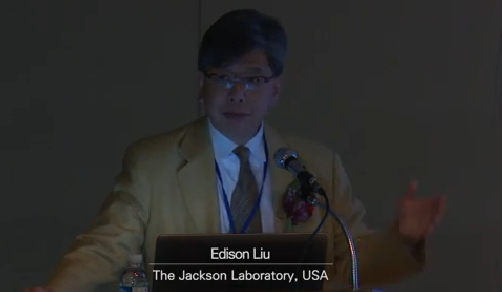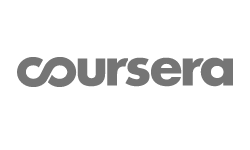High intensity interval training (HIIT) boosts natural killer (NK) cell number and activity in normal weight breast cancer patients; however, whether this occurs in obese individuals is not well established. The goal of this study was to determine whe...
http://chineseinput.net/에서 pinyin(병음)방식으로 중국어를 변환할 수 있습니다.
변환된 중국어를 복사하여 사용하시면 됩니다.
- 中文 을 입력하시려면 zhongwen을 입력하시고 space를누르시면됩니다.
- 北京 을 입력하시려면 beijing을 입력하시고 space를 누르시면 됩니다.

High Intensity Interval Training Increases Natural Killer Cell Number and Function in Obese Breast Cancer-challenged Mice and Obese Women
한글로보기https://www.riss.kr/link?id=A104771948
-
저자
Nicole G. Barra (Department of Pathology and Molecular Medicine and McMaster Immunology Research Centre, McMaster University, Hamilton, ON, Canada) ; Isabella Y. Fan (Department of Pathology and Molecular Medicine and McMaster Immunology Research Centre, McMaster University, Hamilton, ON, Canada) ; Jenna B. Gillen (McMaster University) ; Marianne Chew (Department of Pathology and Molecular Medicine and McMaster Immunology Research Centre, McMaster University, Hamilton, ON, Canada) ; Katarina Marcinko (McMaster University) ; Gregory R. Steinberg (McMaster University) ; Martin J. Gibala (McMaster University) ; Ali A. Ashkar (Department of Pathology and Molecular Medicine and McMaster Immunology Research Centre, McMaster University, Hamilton, ON, Canada)

- 발행기관
- 학술지명
- 권호사항
-
발행연도
2017
-
작성언어
English
- 주제어
-
등재정보
KCI등재,ESCI
-
자료형태
학술저널
- 발행기관 URL
-
수록면
260-266(7쪽)
-
KCI 피인용횟수
0
- DOI식별코드
- 제공처
- 소장기관
-
0
상세조회 -
0
다운로드
부가정보
다국어 초록 (Multilingual Abstract)
High intensity interval training (HIIT) boosts natural killer (NK) cell number and activity in normal weight breast cancer patients; however, whether this occurs in obese individuals is not well established. The goal of this study was to determine whether HIIT effectively boosts NK cells as a therapeutic strategy against breast cancer in an obese mouse model and in overweight/obese women. Diet induced female C57Bl/6 obese mice were assigned to undergo HIIT for four weeks or remain sedentary. Female participants were subjected to a six weeks HIIT protocol. HIIT mice acclimatized to treadmill running were subsequently injected with 5 × 105 polyoma middle T (MT) breast cancer cells intravenously. NK cell number and activation were monitored using flow cytometry, and tumor burden or lipid content evaluated from histological lung and liver tissues, respectively. In both mice and humans, circulating NK cell number and activation (CD3‒NK1.1+CD27+ and CD3‒CD56+, respectively) markedly increased immediately after HIIT. HIIT obese mice had reduced lung tumor burden compared to controls following MT challenge, and had diminished hepatic lipid deposition despite minimal body weight loss.
Our findings demonstrate that HIIT can benefit obese individuals by enhancing NK cell number and activity, reducing tumor burden, and enhancing metabolic health.
참고문헌 (Reference)
1 Pedersen L, "Voluntary running suppresses tumor growth through epinephrine- and IL-6-dependent NK cell mobilization and redistribution" 23 : 554-562, 2016
2 Tamura Y, "Upregulation of circulating IL-15 by treadmill running in healthy individuals: is IL-15 an endocrine mediator of the beneficial effects of endurance exercise?" 58 : 211-215, 2011
3 Gillen JB, "Twelve weeks of sprint interval training improves indices of cardiometabolic health similar to traditional endurance training despite a five-fold lower exercise volume and time commitment" 11 : e0154075-, 2016
4 Andò S, "The multifactorial role of leptin in driving the breast cancer microenvironment" 8 : 263-275, 2011
5 Schmidt S, "The integrative role of leptin, oestrogen and the insulin family in obesity-associated breast cancer: potential effects of exercise" 16 : 473-487, 2015
6 Gillgrass A, "The absence or overexpression of IL-15 drastically alters breast cancer metastasis via effects on NK cells, CD4 T cells, and macrophages" 193 : 6184-6191, 2014
7 Wrann CD, "Short-term and long-term leptin exposure differentially affect human natural killer cell immune functions" 302 : E108-E116, 2012
8 Timmons BW, "Sex-based effects on the distribution of NK cell subsets in response to exercise and carbohydrate intake in adolescents" 100 : 1513-1519, 2006
9 Dimitrov S, "Selective mobilization of cytotoxic leukocytes by epinephrine" 184 : 503-511, 2010
10 Lutz CT, "Sarcopenia, obesity, and natural killer cell immune senescence in aging: altered cytokine levels as a common mechanism" 4 : 535-546, 2012
1 Pedersen L, "Voluntary running suppresses tumor growth through epinephrine- and IL-6-dependent NK cell mobilization and redistribution" 23 : 554-562, 2016
2 Tamura Y, "Upregulation of circulating IL-15 by treadmill running in healthy individuals: is IL-15 an endocrine mediator of the beneficial effects of endurance exercise?" 58 : 211-215, 2011
3 Gillen JB, "Twelve weeks of sprint interval training improves indices of cardiometabolic health similar to traditional endurance training despite a five-fold lower exercise volume and time commitment" 11 : e0154075-, 2016
4 Andò S, "The multifactorial role of leptin in driving the breast cancer microenvironment" 8 : 263-275, 2011
5 Schmidt S, "The integrative role of leptin, oestrogen and the insulin family in obesity-associated breast cancer: potential effects of exercise" 16 : 473-487, 2015
6 Gillgrass A, "The absence or overexpression of IL-15 drastically alters breast cancer metastasis via effects on NK cells, CD4 T cells, and macrophages" 193 : 6184-6191, 2014
7 Wrann CD, "Short-term and long-term leptin exposure differentially affect human natural killer cell immune functions" 302 : E108-E116, 2012
8 Timmons BW, "Sex-based effects on the distribution of NK cell subsets in response to exercise and carbohydrate intake in adolescents" 100 : 1513-1519, 2006
9 Dimitrov S, "Selective mobilization of cytotoxic leukocytes by epinephrine" 184 : 503-511, 2010
10 Lutz CT, "Sarcopenia, obesity, and natural killer cell immune senescence in aging: altered cytokine levels as a common mechanism" 4 : 535-546, 2012
11 Kennedy MK, "Reversible defects in natural killer and memory CD8 T cell lineages in interleukin 15-deficient mice" 191 : 771-780, 2000
12 Nave H, "Resistance of Janus kinase-2 dependent leptin signaling in natural killer (NK) cells: a novel mechanism of NK cell dysfunction in diet-induced obesity" 149 : 3370-3378, 2008
13 Guo S, "Oncogenic role and therapeutic target of leptin signaling in breast cancer and cancer stem cells" 1825 : 207-222, 2012
14 Allott EH, "Obesity and cancer: mechanistic insights from transdisciplinary studies" 22 : R365-R386, 2015
15 Imai K, "Natural cytotoxic activity of peripheral-blood lymphocytes and cancer incidence:an 11-year follow-up study of a general population" 356 : 1795-1799, 2000
16 Cheng M, "NK cell-based immunotherapy for malignant diseases" 10 : 230-252, 2013
17 Holt DM, "Modulation of host natural killer cell functions in breast cancer via prostaglandin E2 receptors EP2 and EP4" 35 : 179-188, 2012
18 Nagao F, "Mobilization of NK cells by exercise: downmodulation of adhesion molecules on NK cells by catecholamines" 279 : R1251-R1256, 2000
19 Gillen JB, "Interval training in the fed or fasted state improves body composition and muscle oxidative capacity in overweight women" 21 : 2249-2255, 2013
20 Barra NG, "Interleukin-15 contributes to the regulation of murine adipose tissue and human adipocytes" 18 : 1601-1607, 2010
21 Timmons BW, "Human natural killer cell subsets and acute exercise: a brief review" 14 : 8-23, 2008
22 Marcinko K, "High intensity interval training improves liver and adipose tissue insulin sensitivity" 4 : 903-915, 2015
23 Vivier E, "Functions of natural killer cells" 9 : 503-510, 2008
24 Pedersen BK, "Exercise and the immune system:regulation, integration, and adaptation" 80 : 1055-1081, 2000
25 Brolinson PG, "Exercise and the immune system" 26 : 311-319, 2007
26 Taniguchi H, "Endurance exercise reduces hepatic fat content and serum fibroblast growth factor 21 levels in elderly men" 101 : 191-198, 2016
27 Nieman DC, "Effects of high- vs moderate-intensity exercise on natural killer cell activity" 25 : 1126-1134, 1993
28 Chan DS, "Body mass index and survival in women with breast cancer-systematic literature review and meta-analysis of 82 follow-up studies" 25 : 1901-1914, 2014
29 Lynch LA, "Are natural killer cells protecting the metabolically healthy obese patient?" 17 : 601-605, 2009
30 Sam S, "Adipose tissue changes in obesity and the impact on metabolic function" 164 : 284-292, 2014
동일학술지(권/호) 다른 논문
-
Epigenomic Hard Drive Imprinting: A Hidden Code Beyond the Biological Death of Cancer Patients
- 대한암예방학회
- Pritish Nilendu
- 2017
- KCI등재,ESCI
-
Novel Genetic Associations Between Lung Cancer and Indoor Radon Exposure
- 대한암예방학회
- 최정란
- 2017
- KCI등재,ESCI
-
- 대한암예방학회
- Ahd Oulad Lahsen
- 2017
- KCI등재,ESCI
-
- 대한암예방학회
- 김현수
- 2017
- KCI등재,ESCI
분석정보
인용정보 인용지수 설명보기
학술지 이력
| 연월일 | 이력구분 | 이력상세 | 등재구분 |
|---|---|---|---|
| 2022 | 평가예정 | 재인증평가 신청대상 (재인증) | |
| 2019-01-01 | 평가 | 등재학술지 선정 (계속평가) |  |
| 2018-12-01 | 평가 | 등재후보로 하락 (계속평가) |  |
| 2015-01-01 | 평가 | 등재학술지 유지 (등재유지) |  |
| 2013-10-14 | 학술지명변경 | 외국어명 : Cancer Prevention Research -> Journal of Cancer Prevention |  |
| 2012-10-15 | 학회명변경 | 영문명 : Korean Association of Cancer Prevention -> Korean Society of Cancer Preveniton |  |
| 2011-04-04 | 학술지명변경 | 외국어명 : Journal of Korean Association of Cancer Prevention -> Cancer Prevention Research |  |
| 2011-01-01 | 평가 | 등재학술지 유지 (등재유지) |  |
| 2008-01-01 | 평가 | 등재학술지 선정 (등재후보2차) |  |
| 2007-01-01 | 평가 | 등재후보 1차 PASS (등재후보1차) |  |
| 2005-01-01 | 평가 | 등재후보학술지 선정 (신규평가) |  |
학술지 인용정보
| 기준연도 | WOS-KCI 통합IF(2년) | KCIF(2년) | KCIF(3년) |
|---|---|---|---|
| 2016 | 0.22 | 0.22 | 0.18 |
| KCIF(4년) | KCIF(5년) | 중심성지수(3년) | 즉시성지수 |
| 0.15 | 0.12 | 0.405 | 0.13 |




 KCI
KCI






